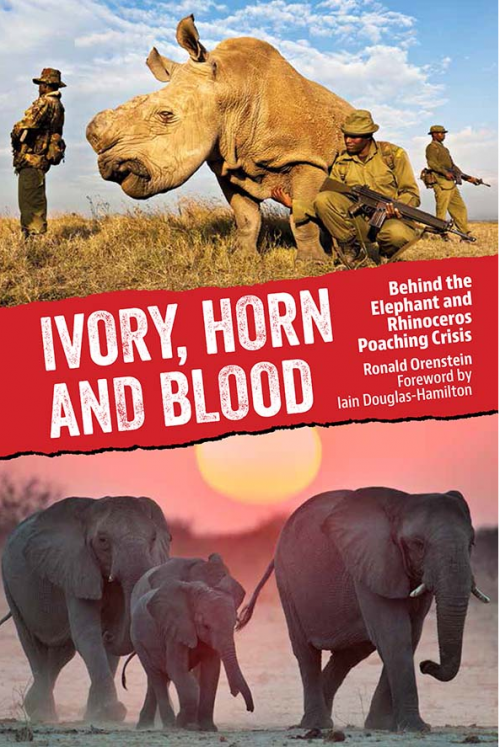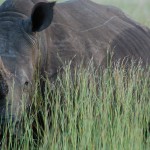
The new book Ivory, Horn and Blood: Behind the Elephant and Rhinoceros Poaching Crisis by Dr. Ronald Orenstein is essential reading for anyone who cares about the future of elephants and rhinos.
Ivory, Horn and Blood thoroughly examines both the historical and the current situation facing elephants and rhinos. The book is compact, yet answers the questions everyone is asking about trade in elephant ivory, rhinoceros horn — and the Convention on International Trade in Endangered Species (CITES).
Ivory, Horn and Blood goes far beyond most treatments of ivory and rhino horn trade, thanks to Dr. Orenstein’s extensive knowledge of CITES. Considering the effect that the politics of trade have had on these iconic species, it is no wonder that CITES itself is practically the book’s third character (the first two being the elephants and rhinos).
“CITES, effective as it has been in the past, cannot be the sole cure for the lawlessness, corruption, crime and greed that have brought rhinos and elephants to their present state. At its best, though, it can catalyze the sort of cooperative actions we must have if real solutions are to be found and implemented.”
For those who seek to understand the complexities of the ivory and rhino horn trades — both legal and illegal — Ivory, Horn and Blood provides a solid foundation, written from firsthand experience in the highly political halls of CITES. And those who seek hope in the current situation will find encouragement, as Dr. Orenstein details the successful demand reduction campaigns for ivory and rhino horn through the historical examples of Japan, South Korea, Taiwan and Yemen.
“One of the most frequent arguments from supporters of legal trade in rhinoceros horn is that nothing else has worked. As we have seen in earlier chapters, this narrow view is simply incorrect — rhino success stories in countries like Nepal stand as proof. Demand has declined in the past in Japan, South Korea and Taiwan, but it did so under the CITES ban on commercial trade. Legalization might help — or it might create a set of truly insurmountable problems on top of the current crisis.”
- Purchase Ivory, Horn and Blood: Behind the Elephant and Rhinoceros Poaching Crisis
- Listen to Dr. Ron Orenstein discuss his book, Ivory, Horn and Blood: Behind the Elephant and Rhinoceros Poaching Crisis, on the Behind the Schemes podcast
- Visit Dr. Orenstein’s Book Blog

![Rhino Horn Trafficking: Market-Based Solutions Under Scrutiny [Podcast]](https://annamiticus.com/wp-content/uploads/2015/11/BehindTheSchemesEpisode38_500px-150x150.png)


